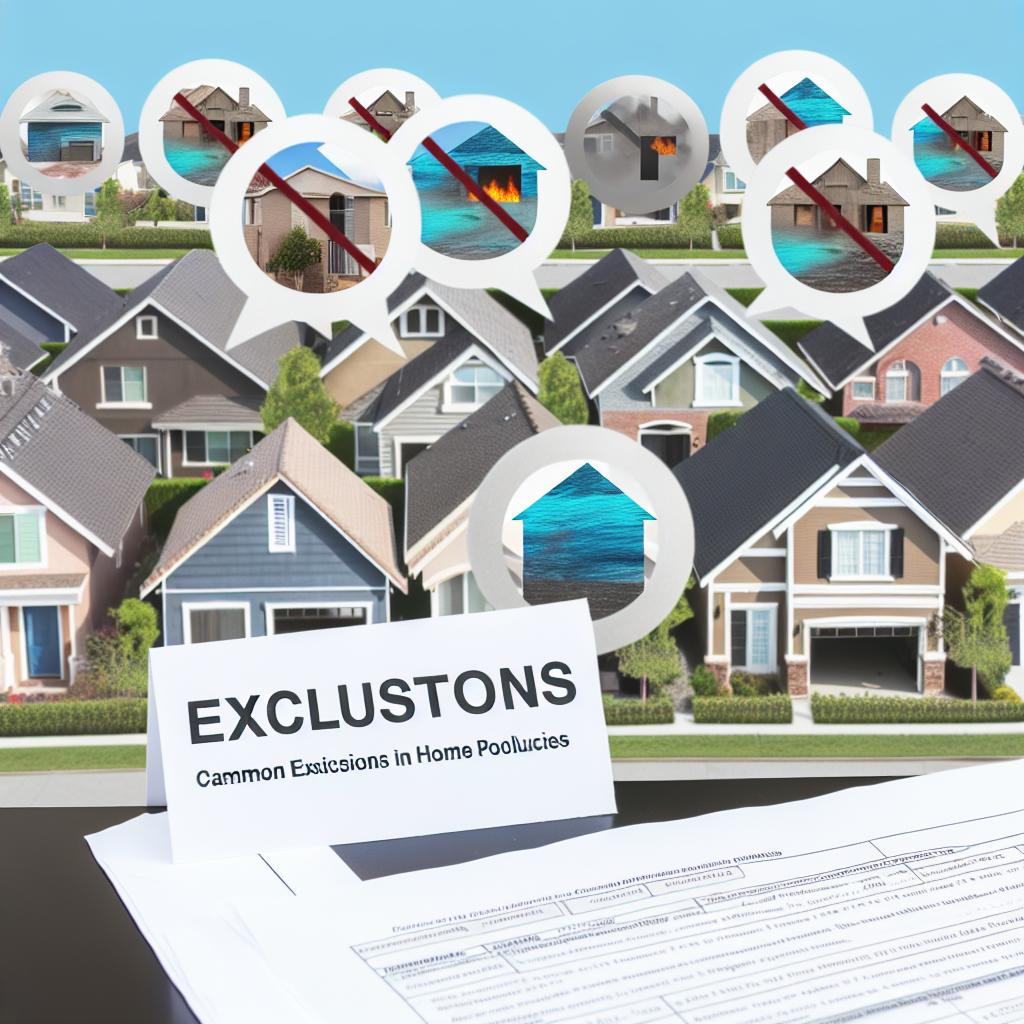Understanding Common Exclusions in Home Insurance Policies
When navigating the complex realm of home insurance policies, it’s essential to grasp not only what is covered but also what is not. Homeowners often assume that their policies will shield them from all types of damage or loss. However, most insurance plans come with a set of standard exclusions. Being aware of these exclusions can preempt financial surprises and help homeowners make informed decisions about their insurance needs.
Natural Disasters Not Covered
Home insurance typically provides a reliable safety net against a wide array of incidents, but it does have limitations, especially concerning natural disasters. Notably, most standard policies exclude coverage for certain natural events like floods and earthquakes. Understanding this facet of your policy is crucial, as being unprepared for such events can lead to significant out-of-pocket expenses after a disaster.
Understanding Flood and Earthquake Insurance
Floods are one of the most common and devastating natural events; however, the typical home insurance policy does not cover flood-related damages. For those living in flood-prone areas, obtaining flood insurance is advisable. This type of insurance covers ground-water-induced property damage, including repairs to the building’s structure and replacing damaged personal belongings. Earthquakes, on the other hand, pose different risks, particularly in seismically active regions. Earthquake insurance generally addresses damages that result directly from seismic activities and may cover repair or rebuilding costs. For comprehensive guidelines on obtaining flood insurance, the FEMA website serves as a valuable resource.
Wear and Tear
One of the fundamental principles of home insurance is that it is not a maintenance policy. This means that it is not supposed to cover damages that result from wear and tear or neglect. If parts of your home, such as the roof or a plumbing system, fail due to age or lack of upkeep, those repairs would not generally be reimbursed by your insurance policy. Regular maintenance is vital to prolong the lifespan of your home’s components and prevent issues that insurance will not cover.
Acts of War and Terrorism
Various geopolitical factors can pose potential risks to property. However, standard home insurance policies tend to exclude damages that occur due to acts of war. The reasoning behind this exclusion is largely due to the unpredictable and wide-ranging nature of war-related damages. While damages resulting from acts of terrorism present a somewhat different scenario, coverage practices are not universally consistent. In some areas, policyholders can add terrorism coverage through endorsements, which can be a beneficial addition depending on your residence’s location and perceived risk levels.
Mold, Fungus, and Pest Infestations
Issues such as mold, fungus, and pest infestations tend to develop over time and are often linked to ongoing maintenance issues. Consequently, any expenses related to these problems are typically not covered by home insurance policies. For instance, mold that grows due to a slowly leaking pipe that went unrepaired falls under maintenance-related exclusions. Similarly, destruction caused by pests like termites or rodents is often preventable through routine checks and maintenance.
Intentional Damage
Insurance policies are structured around providing protection against unforeseen incidents, not deliberate acts. Therefore, any damage that results from intentional actions by the homeowner or someone residing in the home is expressly excluded from coverage. This specific exclusion safeguards the integrity of the insurance system by discouraging fraudulent claims and promoting responsible homeownership.
Why Exclusions Matter
Recognizing these common exclusions is more than an exercise in fine print reading—it is a vital aspect of understanding and utilizing your home insurance effectively. By identifying what is not covered, homeowners can strategically determine if there are gaps in their coverage that they are not comfortable with. This awareness also allows for more informed conversations with insurance advisors or brokers about potential additional coverage needs.
Exploring Additional Coverage Options
To bridge the exclusion gaps in standard home insurance policies, homeowners may explore a variety of supplemental policies and endorsements. Such additional coverage options could include sewer backup coverage, which supports unexpected plumbing issues; identity theft protection, relevant in today’s digital world; or further liability coverage that might be necessary for some households. A personal consultation with an insurance agent can offer tailored advice on these options, ensuring a more comprehensive and customized insurance portfolio.
Furthermore, visiting the websites of insurance providers can provide a broader spectrum of choices and insights into coverage expansions. Understanding and leveraging these additional options plays a critical role in crafting a robust insurance strategy, ensuring peace of mind in the face of unexpected events.
